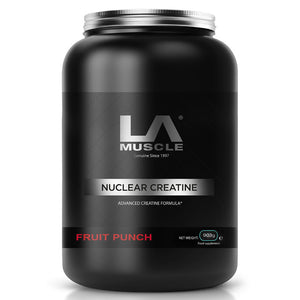Ultrarunning pushes the boundaries of human endurance, offering a unique challenge that goes beyond the traditional marathon distance of 42.2 kilometres (26.2 miles). Taking it a step further, attempting to run 30 marathons in 30 days is an extraordinary feat of mental and physical endurance. This article provides an extensive guide on how to train, prepare, and overcome the challenges associated with this daunting endeavor.
1. Understanding the Challenge
Running 30 marathons in 30 days means covering over 1,266 kilometers (787 miles) in a month. Unlike a one-time ultramarathon, the challenge lies in consistent daily mileage, managing fatigue, preventing injuries, and maintaining mental resilience. It requires an approach that balances physical preparation, mental fortitude, nutrition, recovery, and strategy.
2. Training for the Challenge
To prepare for such an extreme challenge, training needs to be comprehensive, progressive, and adaptive. Here’s a breakdown of the training approach:
a. Base Building Phase (6-8 months prior)The first phase of training should focus on building a strong aerobic base and muscular endurance. This involves:
- Gradual Mileage Increase: Start by gradually increasing weekly mileage to build endurance. Aim to run 60-100 km (37-62 miles) per week, depending on your fitness level, with a gradual 10% increase each week.
- Long Runs: Incorporate long runs into your weekly routine. Begin with 15-20 km (9-12 miles) and progressively increase to 30-35 km (18-22 miles). The goal is to build your body’s ability to handle long distances comfortably.
- Strength Training: Engage in strength training 2-3 times a week, focusing on core strength, leg strength, and overall stability. Exercises like squats, lunges, deadlifts, and core exercises are essential.
- Cross-Training: Include cross-training activities like cycling, swimming, or rowing to enhance cardiovascular fitness without additional impact on the legs.
Once a strong base is established, transition to more specific marathon training:
- Back-to-Back Long Runs: Simulate the fatigue of running daily by incorporating back-to-back long runs. Start with two consecutive days of 20-25 km (12-15 miles) and gradually increase to 30-35 km (18-22 miles) on both days.
- Speed Work and Tempo Runs: Include speed workouts and tempo runs to improve your lactate threshold and running economy. Focus on intervals, fartlek training, and tempo runs at marathon pace.
- Weekly Mileage Increase: Aim to reach peak weekly mileage of 120-160 km (75-100 miles). Incorporate rest weeks every 3-4 weeks to allow for recovery.
- Recovery Runs: Easy runs of 5-10 km (3-6 miles) at a relaxed pace are vital for active recovery and maintaining weekly mileage without undue stress.
The simulation phase focuses on mimicking the actual conditions of running 30 marathons in 30 days:
- Mini Streaks: Start by running 5 marathons in 5 days, then progress to 10 marathons in 10 days. This helps gauge how the body responds to consecutive marathons.
- Focus on Recovery: Implement aggressive recovery strategies between runs, including stretching, foam rolling, ice baths, compression garments, and active recovery like walking or light cycling.
- Mental Preparation: Use this time to develop mental strategies to stay motivated, overcome fatigue, and deal with the psychological toll of consecutive marathons.
- Reduce Mileage: Gradually reduce mileage by 50-70% to allow full recovery. Maintain intensity but reduce the volume to keep muscles sharp.
- Focus on Rest and Nutrition: Prioritize sleep, hydration, and nutrition. Ensure glycogen stores are topped up, and muscles are fully recovered before starting the challenge.
3. Diet and Nutrition Strategy
Diet and nutrition are critical when running 30 marathons in 30 days. Your body needs sufficient fuel to sustain energy, promote recovery, and prevent injury.
a. Daily Caloric Intake- High-Calorie Diet: Expect to consume 3,500-5,000 calories per day, depending on body weight, metabolism, and intensity. Prioritize carbohydrates (50-60%), proteins (15-20%), and fats (20-30%).
- Carbohydrates: Focus on complex carbohydrates like whole grains, sweet potatoes, quinoa, and fruits to maintain glycogen stores.
- Proteins: Include lean proteins like chicken, fish, eggs, tofu, and legumes to promote muscle repair.
- Fats: Healthy fats from nuts, seeds, avocados, and olive oil provide sustained energy.
- Pre-Run: Consume a high-carbohydrate, moderate-protein meal 2-3 hours before running. Options include oatmeal with nuts and fruits, a whole-grain sandwich with lean protein, or a smoothie with protein powder and bananas.
- During Run: Take in 30-60 grams of carbohydrates per hour via gels, energy bars, or electrolyte drinks. Hydration with electrolytes is crucial to prevent dehydration and electrolyte imbalance.
- Post-Run: Aim for a 3:1 ratio of carbohydrates to protein within 30 minutes post-run to replenish glycogen and initiate muscle recovery. Examples include a recovery shake, chocolate milk, or a balanced meal with quinoa, vegetables, and chicken.
- Electrolytes: Regular intake of sodium, potassium, magnesium, and calcium helps prevent cramps and maintain hydration.
- Amino Acids: Branched-Chain Amino Acids (BCAAs) can aid in muscle recovery and reduce fatigue.
- Vitamins and Minerals: Multivitamins, vitamin D, calcium, and iron supplements help support overall health and prevent deficiencies.
- LA Muscle supplements to take: Possessed II, Explosive Creatine, Gamer Pro Elite
4. Recovery Regimen
Recovery is paramount in ensuring you can wake up each day ready to run another marathon. Here’s a comprehensive recovery strategy:
a. Sleep- Quality Sleep: Aim for 7-9 hours of sleep per night. Quality sleep is when most muscle recovery, tissue repair, and mental recovery occur.
- Naps: Short naps of 20-30 minutes can be beneficial for additional recovery during the day.
- Stretching and Foam Rolling: Spend 15-20 minutes after each run stretching major muscle groups and using a foam roller to alleviate muscle tightness and prevent injuries.
- Low-Intensity Activities: Incorporate light yoga, walking, or swimming on rest days to promote blood circulation and reduce muscle stiffness.
- Ice Baths: Ice baths or cold showers for 10-15 minutes post-run can help reduce inflammation and speed up recovery.
- Compression Gear: Wearing compression socks, tights, or sleeves post-run helps reduce muscle soreness and swelling.
- Massage Therapy: Regular sports massages help alleviate muscle tension, enhance blood flow, and promote relaxation.
- Physical Therapy: Consult a physical therapist regularly to address any emerging pain points, correct muscle imbalances, and prevent potential injuries.
5. Potential Problems and How to Overcome Them
The journey of 30 marathons in 30 days is riddled with potential problems, but with foresight and preparation, many can be mitigated.
a. Physical Injuries- Common Injuries: Shin splints, stress fractures, plantar fasciitis, IT band syndrome, and muscle strains are common.
- Prevention: Prioritize proper running form, strengthen weak muscles, stretch regularly, and wear appropriate footwear. Be proactive in addressing early signs of injury with rest, ice, compression, and elevation (RICE) therapy.
- Management: Consult a sports physician or physiotherapist if an injury progresses. Consider modifying mileage or taking a day off to avoid long-term setbacks.
- Challenge: Mental exhaustion can lead to burnout, making it harder to maintain motivation.
- Overcoming Mental Challenges: Break the challenge into smaller, more manageable goals (e.g., 5 marathons at a time), maintain a positive mindset, and practice mindfulness or meditation. Consider listening to music, audiobooks, or motivational podcasts to keep your mind engaged.
- Support System: Build a network of friends, family, or fellow runners for encouragement, accountability, and emotional support.
- Common Issues: Runners often face bloating, cramps, diarrhea, or nausea, especially with prolonged exertion.
- Prevention and Management: Experiment with different foods and hydration strategies during training to identify what works best for you. Avoid high-fiber or high-fat foods before runs, and ensure steady hydration.
- Dehydration Risks: Running in hot or humid conditions without proper hydration can lead to cramps, dizziness, or even heatstroke.
- Strategy: Drink water and electrolyte drinks consistently throughout the day. Monitor urine color and frequency as a hydration check.
- Challenge: Accumulated fatigue can disrupt sleep, hindering recovery.
- Overcoming Sleep Issues: Develop a pre-sleep routine to relax the body and mind. Use techniques like deep breathing, progressive muscle relaxation, or visualization to promote better sleep.
6. Mindset and Mental Preparation
The mental aspect of ultrarunning is just as important as the physical. Here’s how to mentally prepare:
- Visualization Techniques: Regularly visualise yourself successfully completing each marathon and crossing the final finish line. This helps reinforce confidence and determination.
- Embrace Discomfort: Understand that discomfort and pain are part of the journey. Learn to differentiate between pain that is harmful and pain that is a normal part of endurance running.
- Develop a Mantra: A personal mantra, such as "One step at a time," can help maintain focus and motivation when the going gets tough.
- Focus on the Present: Concentrate on the current moment or mile, rather than getting overwhelmed by the entire challenge. Breaking the race down mentally into smaller segments can make the task seem more manageable.



























